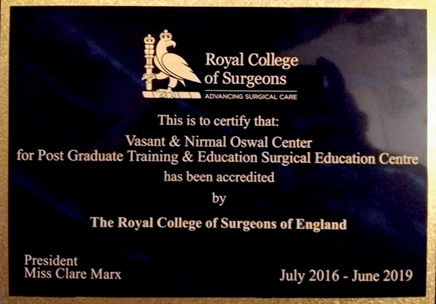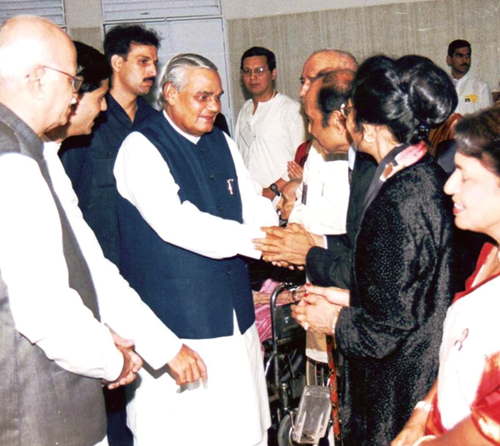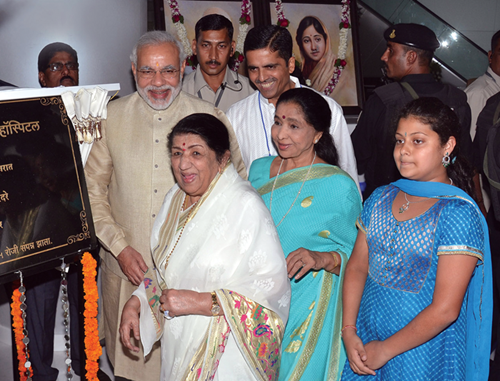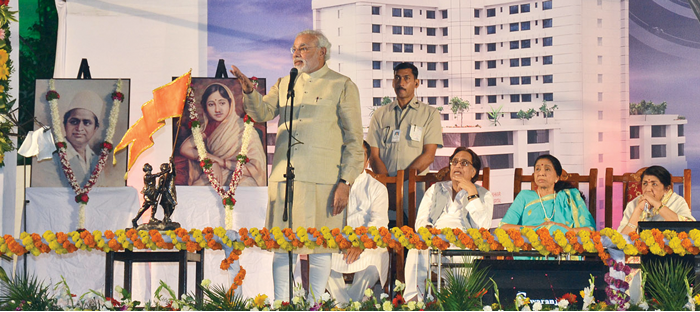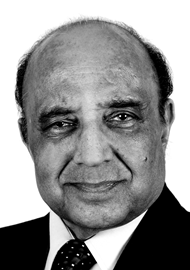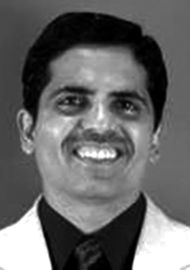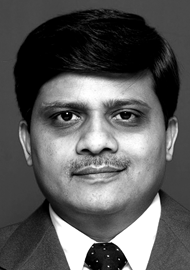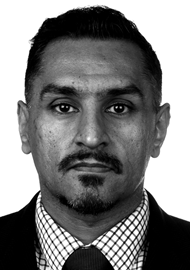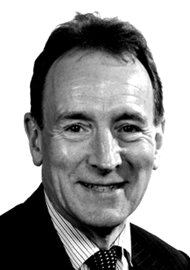In 2001, a non-profit healthcare facility was founded in Pune India, providing low and middle income group patients with treatment, not only at a minimum cost, but of a quality which bears the stamp of approval by the Royal College of Surgeons of England. Mr Vasant Oswal, an integral figure in the evolution of the hospital, speaks to other key members involved in its development.
Deenanath Mangeshkar Hospital (DMH) is a 1000-bed hospital in Pune, India, with a 25,000 square feet dedicated postgraduate study centre which has established several surgical training courses. In recognition of their high educational quality, Royal College of Surgeons (RCS) has awarded the facility accreditation as ’a Centre of Surgical Education and Training’ making it the first centre to achieve this status in India. The RCS has also approved the first overseas RCS Senior Clinical Fellowship at the laryngology department of the hospital for a period of three years.
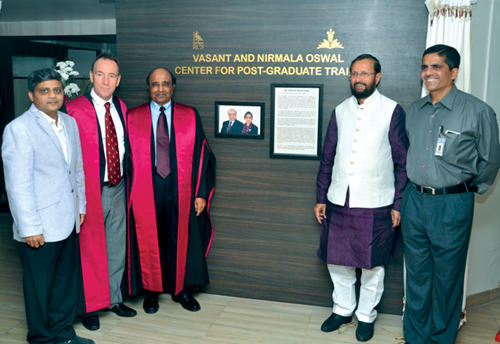
Inauguration of Vasant and Nirmal Oswal Centre for Postgraduate Training.
From left to right, Dr Sachin Gandhi, Mr Paul O’Flynn, Mr Vasant Oswal, Mr Prakash Javadekar, Dr Jay Kelkar.
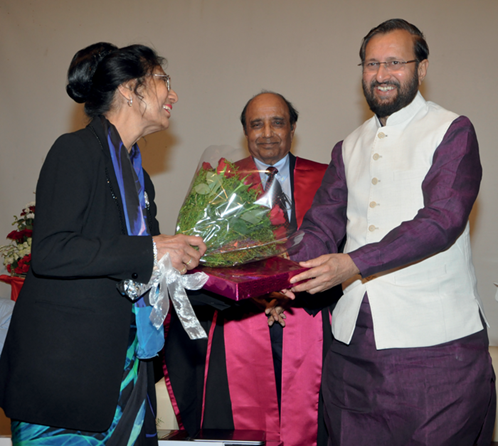
From right to left: Prakash Jawadekar, Union HRD Minister, Government of India presenting bouquet to Nirmal Oswal.
Dr Dhananjay Kelkar, Medical Director, Deenanath Mangeshkar Hospital, Near Mhatre Bridge, Erandawne, Pune, Maharashtra 411004, India.
Deenanath Mangeshkar Hospital is the largest non-profit multi-specialty hospital, founded in 2001 in Pune, India. Its focus is to provide state of the art diagnostic, therapeutic and intensive care facilities at an affordable cost to the lower and middle income group clientele (LMIG) in a one-stop medical centre. The advanced medical facility includes joint replacement surgery, paediatric cardiac surgery, liver transplant, voice clinic, shoulder and sports clinic, and bone marrow and stem cell transplant unit for leukaemia patients. The hospital has a capacity of 1000 beds, 500 of which are super-specialty beds. Annual overall outpatient attendance is 300,000 with 50,000 admissions keeping 20 operating theatres busy six days a week. An intensive care unit (ICU) consisting of a total of 105 beds (52 neonates and 12 paediatric) caters for critical care. Robotics and an extension of the stem cell transplant facility is in the pipeline.
Background
The Jnana Prabodhini (JP), established in 1962 and located in Pune, is the brain child of educator and visionary, the late Dr VV Pendse. Jnana Prabodhini means ‘awakener of real knowledge’ in Sanskrit. It is an organisation of a conceptual social movement. Its doctrine is ‘motivating intelligence for social change’; its aim, to overcome socioeconomic, religious and political dogma and develop physical, mental, intellectual and spiritual qualities of the youth from all socio-economic strata of the society. A school, called Jnana Probhodini Prashala, was established to create a congenial atmosphere, enrolling intellectually gifted boys and girls. The resultant titre was an even-minded, balanced and dedicated body of workers who would competently overcome any contingency and bring about a desirable change in humanity.
The former students of this unique institution came together under the banner of Jnana Prabodhini Medical Trust to establish, administer and promote the healthcare facility, with the aim of providing a one-stop state of the art diagnostic, therapeutic and intensive care facility at an affordable cost to the lower and middle income group (LMIG) patients.
So, how did we make a start? Legendry Ms Lata Mangeshkar - a household name for her melodious singing voice in the world-famous Bollywood film industry - proposed, along with the rest of the Mangeshkar family, the development of a medical facility as a memorial to their late father, Deenanath Mangeshkar, who passed away in 1942 in Pune. We were confident that the community would support the cause when we had a clear goal in mind. A famous axiom of Mahatma Gandhi, ‘find purpose, the means will follow’, could not be more apt. Six acres of land was made available, at no cost, by the Government of India. Nearly one third of the budget flowed in from a multitude of donors - rich and poor, commoners and distinguished, Indians and foreigners - inspired by the concept and promoted by their beloved ‘Queen of Melodies’, Lata Mangeshkar.
Inauguration of phase one in 2001 by Mr Bajpai, former Prime Minister of India.
Inauguration of second phase of Deenanath Mangeshkar Hospital in 2014.
Front L-R: Lata Mangeshakr and her sister, Asha Bhosle. Behind L-R: Mr Narendra Modi,
Prime Minister of India and Dr Jay Kelkar, Medical Director, DMH.
Prime Minister of India, Mr Narendra Modi, delivering a talk at the inauguration of phase two in 2014. Behind him L-R Lata Mangeshkar’s brother, Pandit Rhudaynath Mangeshkar; sister, Asha Bhosle; and Lata Mangeshkar herself.
The Green building technology
In designing the facility, we were cognisant of the extant buzz word: ‘eco-friendly’. Phase one accommodation uses natural light and ventilation, thereby minimising energy costs. Phase two, the super specialty wing, is built with green building technology. It generates electricity from compressed natural gas. The heat generated from this electricity is used for vapour absorption and cooling to reduce air conditioning costs. There is a dedicated sewage treatment plant for the recycling, purification and distribution of water and solar energy for water heating.
Revenue generation
Being a non-profit facility, we never turn away the patient on the basis of care not being affordable. How do we do this? We recover full costs from 60% of the patients. Surplus is then diverted to provide treatment to 20% at zero cost and to a further 20%, at a subsidised cost.
Quality assurance
Our initial project was to provide a state of the art facility for patients’ services and needs. However, a concept of teaching and academic activity as a hallmark of high standards evolved and was embraced by the medical staff as stamp of their professional integrity. A number of departments established teaching courses. In our eagerness to ensure standards, we followed protocol of the RCS who provided much support. This led to an award of ‘centre accreditation’ for surgical courses run by the DMH, a quality assurance to all our patients irrespective of their ability to pay for the high-quality care. DMH is the only medical facility in the whole of India to receive this prestigious award. Our ultimate ambition is for DMH to become an international centre for FRCS examination, research collaboration and resident exchange programme.
“The DMH project and the education are an example of what can be achieved when willingness, opportunity and direction come together.”
Academic activity
Deenanath Mangeshkar Hospital Research Centre (DMHRC) is housed in an area spanning over 25,000 square feet. It also accommodates the Centre for Postgraduate Education and Training. The research centre regulates, facilitates, promotes and implements clinical and biomedical research in diverse areas. Current international collaborations include: the Department of Pediatrics, University of California, Los Angeles (UCLA), USA; the Department of Clinical Biochemistry, University of Aarhus, Denmark; and genomic profile of betel nut / gutka chewing-associated oral cancer in collaboration with UCL Cancer Institute, UK.
Our message
We feel that our successful model of high-quality treatment at an affordable cost, research and education will be an inspiration for our profession here in India and many other countries to follow.
Department of Laryngology
Dr Sachin Gandhi, Chairman and Director of department of Laryngology, Deenanath Mangeshkar Hospital, Near Mhatre Bridge, Erandawne, Pune, Maharashtra 411004, India.
The laryngology department in DMH has several facets:
Outpatient and surgical facility: In any clinical set-up, an accurate preoperative diagnosis forms the backbone of the management strategy. High definition video laryngostroboscope, computerised speech labs, digital swallowing workstations, Transnasal Oesophagoscope (TNO) and high-speed cameras – the ultimate in technology – give us a high degree of precision in diagnostics for airway and swallowing disorders. This is further supported by on-site imaging with digital scans and PET. We are a tertiary referral centre, with an annual workload of over 1200 new referrals, drawing patients from all over India and surrounding countries. A quarter of those are in the paediatric age group. Nearly 50% of all new patients need surgical procedures; a rather high proportion, due to tertiary referral status. All our anaesthetic colleagues have undergone specific training to provide expertise for our cases. This means that we can provide 24-hour high-standard surgical cover for critical patients at any hour from our vast patient coverage all over India and surrounding countries. We do not undertake office-based therapeutic manipulations due to patient non-compliance. Operating suites are fully equipped with UltraPulse carbon dioxide lasers, high frequency jet ventilation and diode lasers. In common with the universal trend, early glottis cancers undergo surgical excision as primary modality. Dedicated histopathologists provide frozen section reports and expert evaluation of accurately oriented excised specimen.
Postgraduate education and training
We run a postgraduate training programme with an intake of four students per year. We also have two fully funded university-accredited annual fellowships in advanced laryngology. Additionally, we have run two-week courses for surgeons seconded by Iraqi Government. Apart from ongoing teaching, we also run intensive three-day hands-on annual training courses, accredited by Maharashtra Medical Council on voice, airway and swallowing disorders. The hands-on surgical training is provided in an advanced simulation and surgical training lab, equipped with laser, microscope and simulation lab. As part of the centre accreditation awarded to DMH by The RCS, our laryngology courses are also accredited; a testimony to the high standard we strive to maintain. The RCS has also approved the fellowship programme in laryngology for a period of three years. This is the first overseas RCS Senior Clinical Fellowship to have been approved by The RCS anywhere.
Laryngology – an expanding super-specialty?
We believe so. In the past 20-odd years, high-tech instrumentation and equipment in this field has done much to better our understanding and management of this important functional organ of the body. Dedicated airway, swallowing and voice centres are being set up in lower and middle income group countries (LMIGC). With our advanced centre, and The RCS approval of our training courses, we are well placed to play an active role to support development of such centres by training the trainers, to facilitate accreditation processes by Laryngology and Voice Association (LVA), more suitable for LMIGC.
Salim Nazir, Head of Quality Assurance and Accreditation and member of the RCS England Panel, Royal College of Surgeons, 35-43 Lincoln’s Inn Fields, London, WC2A 3PE, UK.
We visited the DMH on two occasions. We were impressed by the significant expertise of the faculty. The training – both formative and summative – was the key strength. The trainees valued the individualised supervision during the skill-based exercises. On the recommendation of the panel, the council awarded accreditation as ’a Centre of Surgical Education and Training’. This is the highest award to the institution as a whole for the provision of a portfolio of courses. DMH is the first centre in India to achieve the accreditation. The RCS looks forward to a long collaborative relationship with the DMH.
Prof Paul O’Flynn, MBBS, FRCS, FASE(RCS), Consultant ENT / Head and Neck Surgeon; RCS Council member; Chair of RCS England QA and Accreditation; Hon Professor, Deenanath Mangeshkar Hospital, Pune; FRCS examiner.
As Chair of RCS England QA and Accreditation, I acknowledge the devotion of the staff of the DMH to education and training undertaken in a superb dedicated postgraduate centre. The clinicians work entirely as honorary administrative board members and derive their income only from their clinical work as per schedule of charges. The DMH project and the education are an example of what can be achieved when willingness, opportunity and direction come together. This is especially laudable when the facility is formulated on a non-profit basis.
On a personal level, I commend Vasant Oswal’s untiring input over the past 15 years. From its very inception, he supported this hospital in his hometown Pune. He has been instrumental to bringing it to the forefront of technology, innovation, quality education and training, and particularly the most advanced laryngology set-up, comparable to any reputable establishment around the world.
